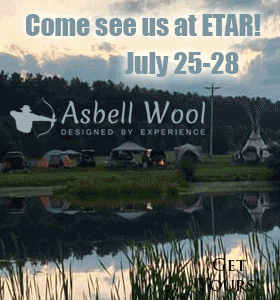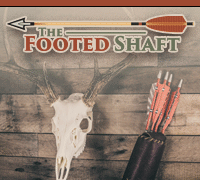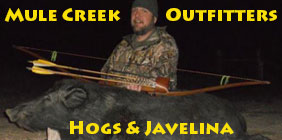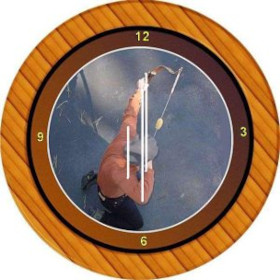50% of genetics come from the female. In order to influence racks by selecting individual buck harvests, you'd need several 1000 acres with extremely intense buck harvest management, like on a big professional Texas ranch.
When trying to improve buck age structure in any given area, think body size/age vs the rack. If you're trying to do more QDM style management, shoot as many females as needed and try hunting the oldest 20% of bucks in any given area and let the rack chips fall where they may.
Mature bucks is what QDM is about, not rack size. It just so happens that about everywhere in the country, if a buck makes it to 4-5 years old, he typically has an impressive rack.
The buck mentioned could breed with any given doe and create a monster buck offspring, if that fawn was then allowed to reach maturity.
This is a good article by Charles Alsheimer...
http://charliealsheimer.com/ca/articles/art_theywalk.html THEY WALK 'TIL THEY DIE
by Charles J. Alsheimer
Long time readers of Deer and Deer Hunting know of the quality deer management program many Steuben County, New York landowners instituted back in 1991. When we organized we had visions of putting some real slammers on the wall. At the time we figured that if we could pass on the yearling and 2 1/2 year old bucks we'd have the seed needed to get a fair number of these passed bucks to 4 1/2 years of age or older. For the most part this has never happened.
In the last 5-7 years several QDM practitioners in our group ramped up their scouting by using trail monitoring cameras as a way to find out what kind of bucks were using their land. This form of scouting has proven to be very enlightening. Prior to using cameras most of us felt that if we could provide the best possible nutrition, in the form of food plots, have great sanctuaries, and limit the way we hunted, we could hold frequently seen bucks on our properties. What we discovered has made us rethink this mindset.
The Younger Generation
Typically 1 1/2 year old bucks will cover far less ground than 3+ year old bucks during the autumn months. For the most part yearling bucks come into their first hard antler autumn having dispersed from nearby lands to set up their first home range. Though they will travel during the rut they are more apt to stick close to their new home range, providing food and cover is plentiful. Our trail camera data has shown this to be the case and in many instances the same yearling bucks show up on the same cameras day after day, throughout the hunting season, whether the rut is full blown or not.
Two and half year old bucks are much different than yearling bucks and the distance they travel will be dictated by the doe population and number of older class bucks in their immediate area. On most ranges where little or no quality deer management is practiced the two and a half year old bucks are the oldest bucks in the herd and do most of the breeding. If they have adequate food, cover and a good doe population they won't be inclined to travel much.
However, in areas where there is a fine-tuned deer management program in place (meaning great food, cover, adequate does and a reasonable number of 3+ year old bucks present) their traveling story can be quite different. In such herds 2 1/2 year old bucks will often travel great distances during the rut in their quest to be a part of the breeding equation.
Alpha Class
3 1/2 year old: For the majority of North American deer range the 3 1/2 year old bucks are the ones a hunter dreams of hunting. A 3 1/2 year old buck is kind of like an 18 year old human male. He thinks he knows his way around females and is willing to do whatever it takes to show them he's the man. Both are maxed out on testosterone.
Having raised many 3 1/2 year old bucks over the years I can offer that most feel they are bullet proof, can put a whopping on any buck walking, and have an incredible desire to be top gun in the herd. Simply put, they are driven to be the alpha buck and prepared to do whatever it takes to make it happen. In parts of the country where great soils are found 3 1/2 year old bucks can easily sport antlers in the 125-150 Boone and Crockett range.
By the time late October rolls around in the North a 3 1/2 year old begins exhibiting all the classic behaviors you would expect from a mature buck. He goes out of his way to bully younger, and sometimes even older bucks he encounters. The most common way he does this is by exhibiting threat walking (ears pulled back, hair on end, eyes rolled sideways with front legs stiff as he walks) when he encounters subordinate bucks. It's only when he tries the same strategy on bucks his age or older that he gets into a fight. Ugly fights can occur at any point from velvet peel to antler cast. However, they often take place when two like-size bucks square off over the same estrous doe.
A 3 1/2 year old buck also does a tremendous amount of rubbing and scraping, especially if other bucks of his age class share the same territory. And it is not uncommon for several bucks to work the same scrape throughout the autumn months. It is a way for them to show dominance and leave their own scent behind for all to notice. Though this age class will rub small trees, they often take out their rubbing frustration on trees with a 4" or greater diameter.
4 1/2 year old: Four and half year old bucks have the same attitude as a 3 1/2 year old but are better equipped to prove their point. By the time a buck reaches 4 1/2 they have matured and are studs in every sense of the word. In most cases they are king of the mountain because few places in North America can expect to have a large number of bucks older than 4 1/2 without high fences. In the 16 years I've been practicing QDM on our farm I've only killed two 5 1/2 year old bucks. Three were 4 1/2, but the vast majority have been 3 1/2 year olds. Though a 4 1/2 year old buck will bully and fight younger bucks during the rut he isn't nearly as aggressive with them as 3 1/2 year olds are. In the majority of cases yearlings and 2 1/2 year old bucks give a 4 1/2 year old buck all the space he wants because they know he is the king and they aren't going to change the situation, no matter how much they want to.
This age class will rub and scrape more than 3 1/2 year old bucks. The rut is all about dominance and breeding rights and for this reason 4 1/2 year old bucks go out of their way to prove they are a herd's alpha animal.
Two's A Crowd-Three Won't Work
It's not uncommon for several 3 1/2 and 4 1/2 year old bucks to spend the summer hanging out together in bachelor groups. When this occurs landowners get excited. Unfortunately this excitement can be short lived because a whitetail buck is driven to be the breeder.
When a deer range contains several mature bucks the stage is set for many of these bucks to be losers in the breeding sweepstakes. The fights to determine who will do the breeding can be intense and when a mature buck loses a fight he often moves on to another area in hopes of becoming the alpha buck. For this reason it is very difficult to stockpile wild free-ranging bucks.
They Follow Their Nose
To the winner goes the spoils and any buck who finds himself the odd man out will act accordingly. With the rut approaching and the air filled with pheromones a buck will begin walking if he is not the alpha buck. He goes from doe group to doe group and if he finds an area that does not have a dominant mature buck he may set up shop there if the doe population is adequate to fill his desires. If not, he will move on. During this process a buck may move multiple times, covering 4,000 acres or more, which may mean several miles.
The bottom line is the 3s and 4s walk till they die. Because they are constantly on the go they eventually find themselves in a hunter's sights. A couple examples illustrate this.
Two Cases from Many
Our farm is situated between three other landowners who are aggressively managing for better deer and better deer hunting. Together the four properties encompass over 700 acres. All of us plant a variety of food plots and work to keep our doe population in check. We also use trail cameras to help us know what is on our land.
The buck I killed last fall was a very nice 3 1/2 year old for my part of western New York State. I photographed him on my trail camera several times, as did some of the others in our group. I also knew of him being sighted more than a mile from me, well off the four cooperating properties. This guy fit the bill as being a real active walker.
On November 19, 2002 I killed my best New York buck to date, a 150 class 4 1/2 year old. What was interesting about this buck is that a friend of mine had photographed him on November 7th-nearly 2 air miles from where I killed him. I had never seen the buck before the day I put my sights on him and had never captured him on my trail cameras. Like last year's buck and many others I have killed, this 4 1/2 year old was a real walker and his wandering got him killed.
I could go on and on with example after example of the distance we've seen bucks travel in my area. What needs to be gleaned from our experiences (and others from around the country) is that regardless of how good your habitat is you probably cannot hold all your prized bucks once the rut begins. If a 3 or 4 year old buck can't be the alpha male on your land they will go to where they can be.
Realistic Expectations
In the real world having a few 3 1/2 year old bucks is about the best one can expect to find, at least for the majority of whitetail locales. Why? Because hunting pressure does not allow for older class bucks in most herds. Hunters desiring to hunt truly mature bucks (4 1/2 year old and older) have to go to areas where deer are managed for age or remote habitats where many bucks can survive to maturity.
This figure will vary throughout the country but after 16 years working at this QDM game I've come to the conclusion that the best we can hope for in my area is one or two 125" to 140" bucks for every 250 acres. And this can only happen if you attempt to do everything right, from food plots to doe management, to passing up the younger bucks. Mature bucks cover a lot of ground in their quest for breeding rights and when they walk, they usually die.














